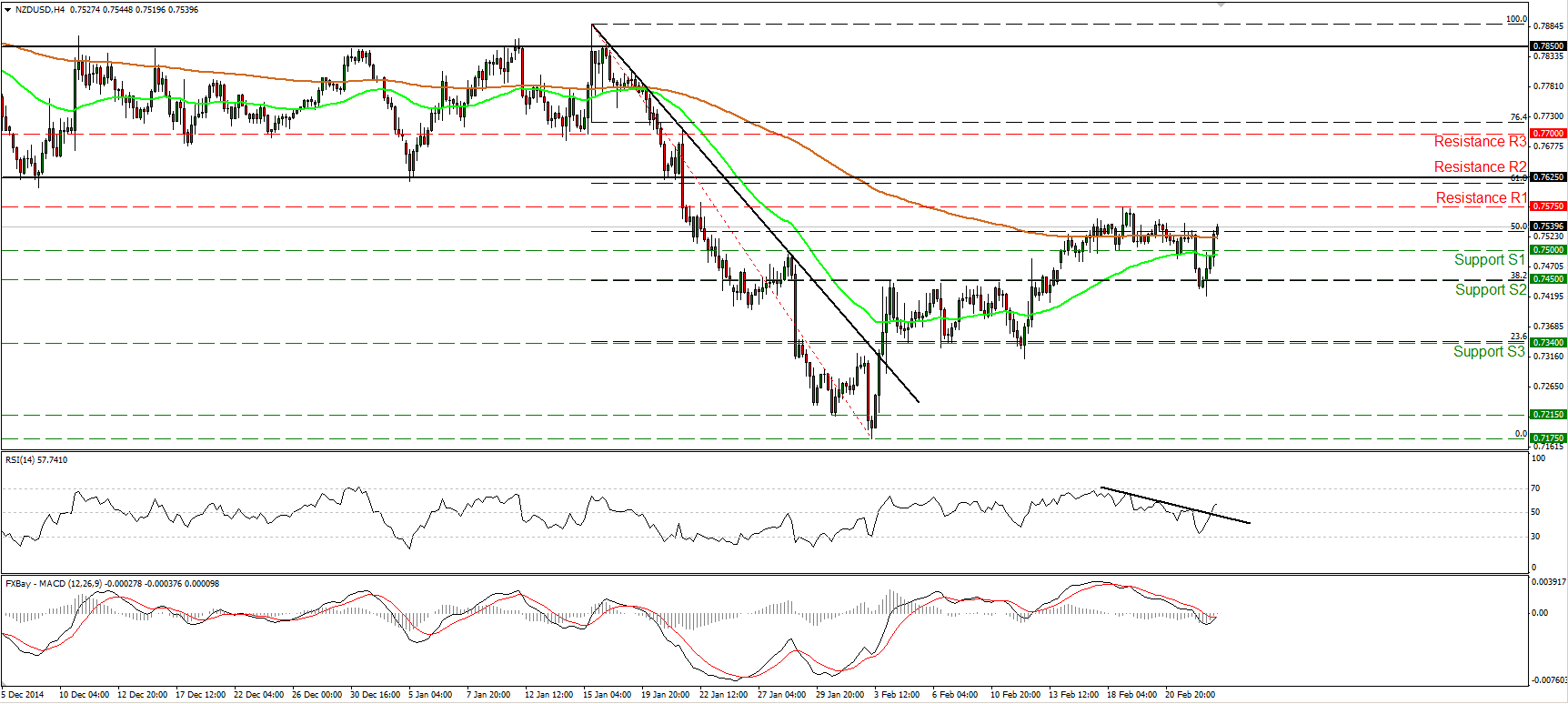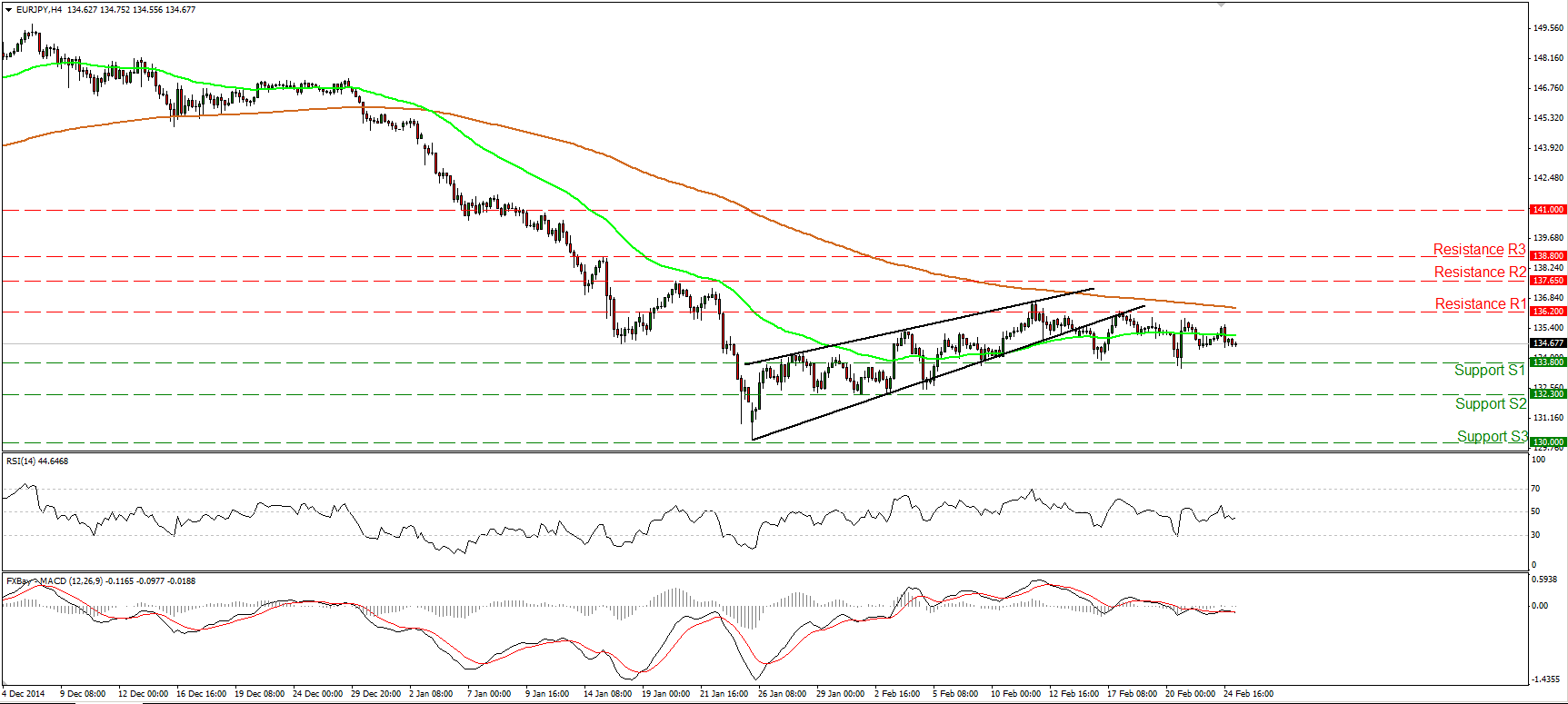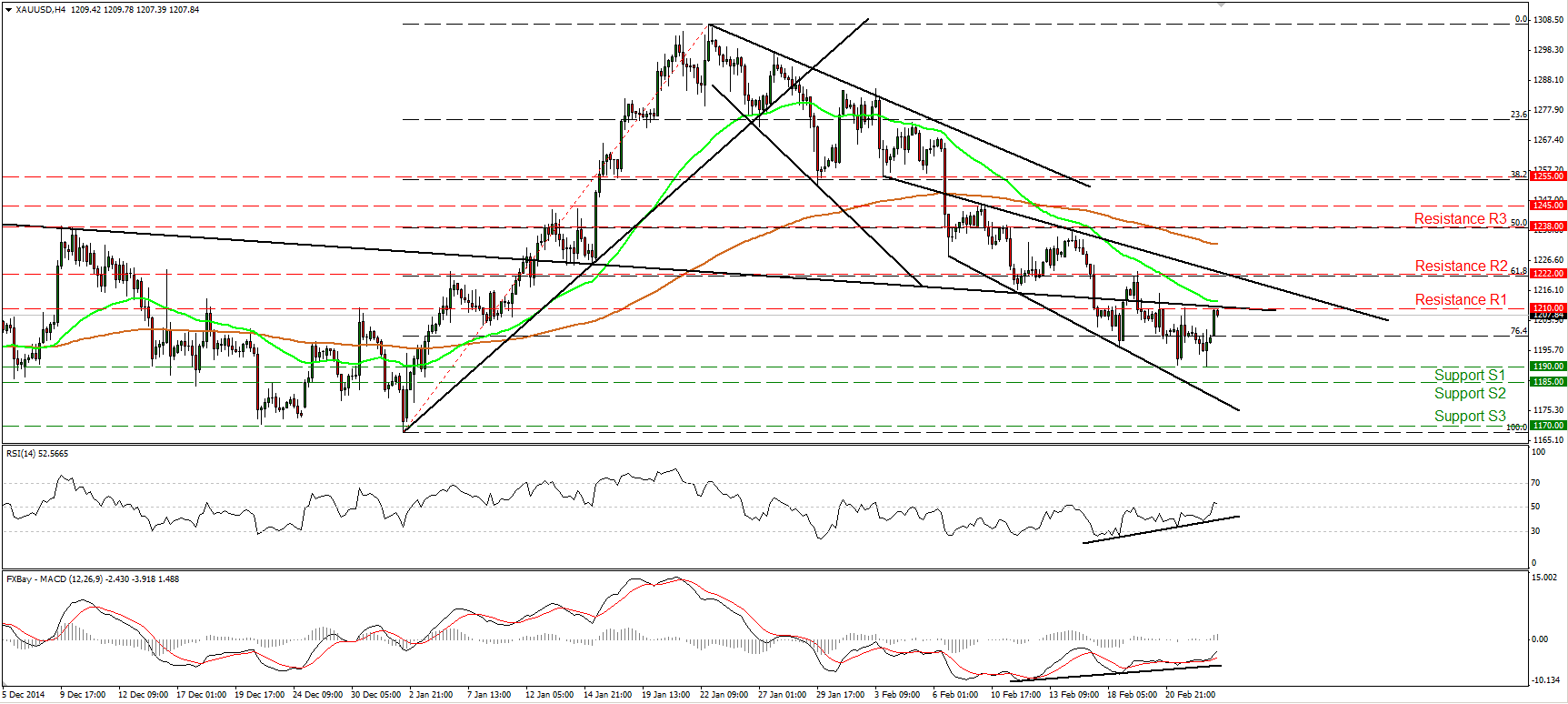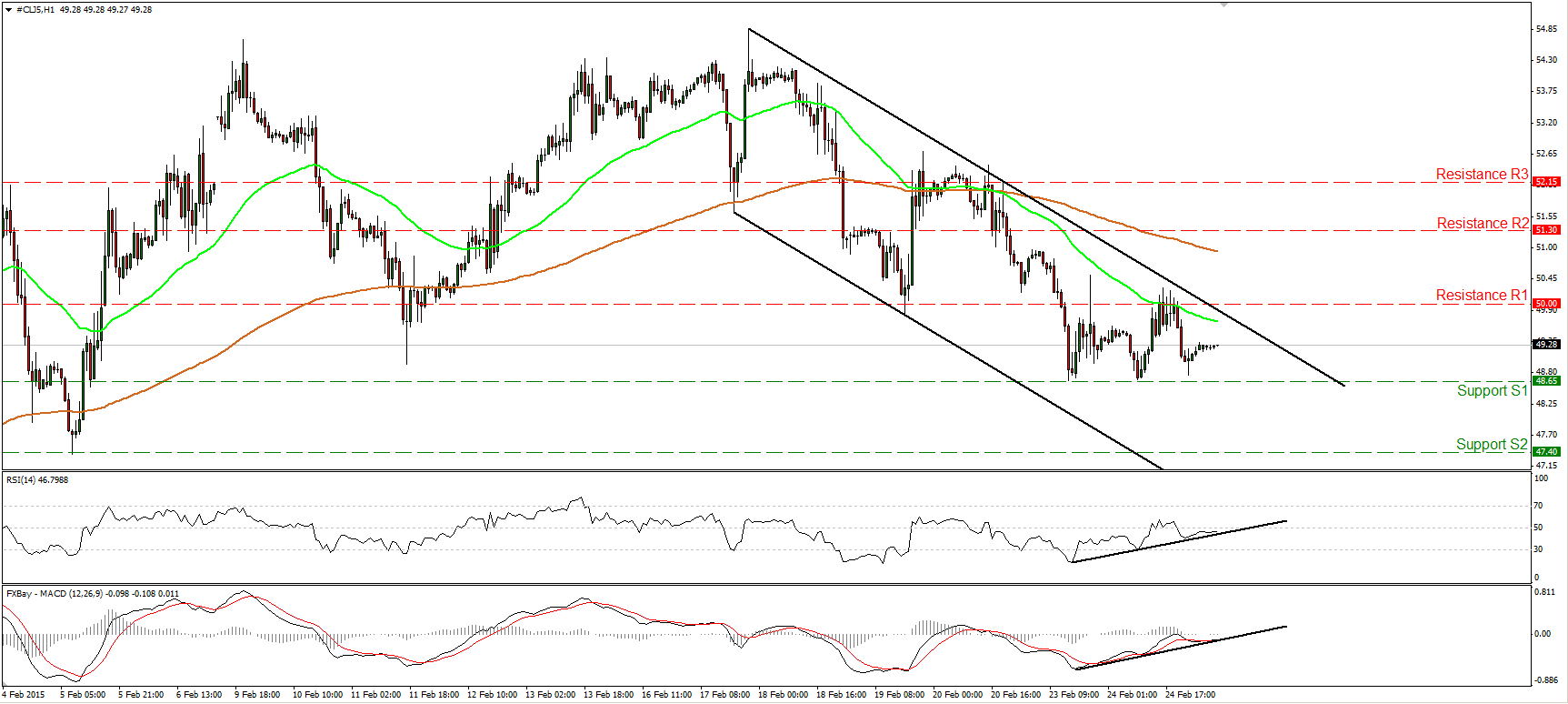• Market takes Yellen’s comments as dovish = USD-negative The FT headlined that “Fed paves the way to raise rates this year as US economy strengthens.” The New York Times said “Fed’s Janet Yellen, in Testimony, Counsels Patience on Interest Rate Increase.” Which is it? Perhaps the conflicting headlines reflect the relatively balanced outlook that Fed Chair Janet Yellen presented. In any case, after an initial burst, the market decided that the NYT’s interpretation was more accurate. Fed funds rate expectations fell a large 11 bps in the long end and 10-Year bond yields fell 6 bps (13 bps from their peak) to back below 2.0% as the market pushed back expectations of when the Fed might tighten.
• The key points were that she repeated that the “patient” terminology “means that the Committee considers it unlikely that economic conditions will warrant an increase in the target range for the federal funds rate for at least the next couple of FOMC meetings” and that they would drop the “patient” phrase before raising rates. Concretely, this means at the earliest they could drop the phrase at the March meeting and start raising rates in June. At the same time she emphasized that dropping the “patient” phrase does not mean that they will necessarily start raising rates “in a couple of meetings,” but rather just “that conditions have improved to the point where it will soon be the case that a change in the target range could be warranted at any meeting.” In other words, after they drop the “patient” phrase, then we are back to watching the data and deciding meeting-by-meeting. This important phrase was seen as diluting the forward guidance somewhat and caused the change in view on interest rates. Moreover, Yellen also emphasized that the continued low level of inflation might still push back the timing of the liftoff, and she said that they were looking at all measures of inflation, including food and energy, not just core PCE. Thus the dovish interpretation.
• At the end of the day, the bond market seemed more interested in the testimony than the FX market. The day’s 0.61% range on EUR/USD was below the average 0.83% range for the last six months, while the 0.93% range in USD/JPY was exactly average. So no big fireworks. The main movements were in CAD, NZD and AUD, but for other reasons – see below. Nonetheless, I think the testimony could dampen demand for the dollar somewhat. True, the US and UK remain the only major countries where a rate hike is being contemplated, but clearly a lot now depends on inflation, and the global trend is for inflation to remain soft. So while I think USD is still on an uptrend, it may not rise as quickly as I had expected, unless US wages start to rise significantly. In that respect, the recent move by Wal-Mart Stores Inc (NYSE:WMT) to raise wages could be even more important than Yellen’s testimony.
• Read the text at www.federalreserve.gov/newsevents/testimony/yellen20150224a.htm
• Poloz sends rate expectations plunging Bank of Canada Gov. Stephen Poloz also spoke yesterday and he was definitely dovish. He said the BoC’s surprise cut in rates last month has bought the central bank some time to see how the economy develops. This caused investors to back off from their assumption that BoC might cut rates again at the March 4th meeting, and CAD strengthened as a result. While the timing of the next cut was pushed back, the market is still assuming that the next move in Canadian rates is another cut – something Poloz confirmed by saying that BoC still has “more firepower” -- and so I expect CAD to remain under pressure, especially as oil prices remain under pressure too.
• Eurozone accepts Greece’s proposals The eurozone finance ministers accepted Greece’s reform proposals, which now go to the various national parliaments for approval. This is likely. However, the ministers warned that Greece may be too optimistic about how quickly it can boost tax revenues. The Greek government now faces the difficult task of negotiating those tax increases, which might make some voters wonder just what kind of a “victory” their new government achieved in its negotiations with the troika – now known as the “institutions.” Moreover, there is still some uncertainty over the government’s cash position, which the press says will be exhausted in a few weeks. Greece may fade from the headlines for now but we certainly haven’t heard the last of it as a market factor.
• China’s preliminary HSBC/Markit PMI for February bounced back to 50.1, just above the boom-or-bust line of 50. This caused a jump in AUD and NZD when it came out. However, the figure may have been distorted by the Chinese New Year. With domestic activity sluggish and external demand uncertain, I question how far the measure can rebound and therefore how much support the commodity currencies are likely to get from this source. As mentioned yesterday, the Baltic Dry Index suggests demand for commodities is quite low at this time.
• Today’s highlights: During the European day, we get France consumer confidence for February. In Sweden, Riksbank publishes the minutes from its February policy meeting where it decided to cut the repo rate by 10 bps to -0.10%, adjust the repo-rate path down a bit and to introduce a “mini-QE” to make monetary policy more expansionary. Given the fact that the Bank can unexpectedly introduce further easing measures at any time, SEK is likely to remain under selling pressure.
• In Norway, AKU unemployment rate for December is expected to remain unchanged from the previous month, compared to the increase in the official unemployment rate for the same month. Therefore, we could see an increase in the AKU unemployment rate as well that could weaken NOK somewhat.
• In the US, Yellen testifies again, this time to the House of Representatives. It will be the same speech as on Tuesday, thus the focus will be on the questions. As for the indicators, new home sales for January are coming out.
• In New Zealand, trade deficit is expected to remain more or less at the same levels.
The Market
EUR/USD virtually unchanged after Yellen’s remarks
• EUR/USD traded virtually unchanged after Fed Chair Yellen suggested that the Fed will not rush into hiking rates and that they will consider such a move on a “meeting-by-meeting” basis after they change the guidance. The rate continues to oscillate between the key support line of 1.1260 (S1) and the resistance of 1.1540 (R2), thus I still consider the short-term path of the pair to be to the sideways. Today Yellen testifies again, this time to the House of Representatives. Her speech will be the same as yesterday, so the market will focus on what questions she receives. If we get no new information, the rate is unlikely to exit the sideways range. With regards to the broader trend I believe that the pair is still in a downtrend. EUR/USD is printing lower peaks and lower troughs below both the 50- and the 200-day moving averages. Nevertheless, I will maintain the view that only a break below 1.1260 (S1) could turn the bias back to the downside and perhaps open the way for another test at 1.1100 (S2), defined by the low of the 26th of January.
• Support: 1.1260 (S1), 1.1100 (S2), 1.1025 (S3)
• Resistance: 1.1450 (R1), 1.1540 (R2), 1.1650 (R3)
NZD/USD shoot up on China’s HSBC PMI
• NZD/USD surged during the Asian morning Wednesday after China’s flash HSBC manufacturing PMI inched above the 50-point line. The rally came after the pair hit support slightly below the 0.7450 (S2) obstacle and drove the battle above the 0.7500 (S1) figure again. The price structure on the 4-hour chart still suggests a short-term uptrend, and as a result, I would expect another test at 0.7575 (R1), the high of the 18th of February, or at the 0.7625 (R2) barrier, which stands close to the 61.8% retracement level of the 15th of January – 3rd of February decline. Nonetheless, in the bigger picture, I still believe that the overall trend is negative. Consequently, I would treat the recovery from 0.7175 as a corrective phase, at least for now.
• Support: 0.7500 (S1), 0.7450 (S2), 0.7340 (S3)
• Resistance: 0.7575 (R1), 0.7625 (R2), 0.7700 (R3)
EUR/JPY could still extend lower
• EUR/JPY moved in a consolidative manner on Tuesday, staying between the support line of 133.80 (S1) and the resistance of 136.20 (R1). Taking a look at our momentum studies, I still expect the pair to trade lower and perhaps challenge again the 133.80 (S1) zone. The RSI is back below its 50 line and is pointing down, while the MACD stands below both its zero and signal lines. If the bears are strong enough to drive the battle below the 133.80 (S1) area, I would expect them to challenge the next obstacle at 132.30 (S2). On the daily chart, we see that the strong recovery from 130.00 remained limited near the 38.2% retracement level of the 29th of December – 26th of January plunge. Hence, I would still see that recovery as a corrective phase.
• Support: 133.80 (S1), 132.30 (S2), 130.00 (S3)
• Resistance: 136.20 (R1), 137.65 (R2), 139.35 (R3)
Gold hits again support at 1190
• Gold slid yesterday, but hit again support at 1190 (S1) and shot up to trade above 1200. Yesterday’s move confirmed the positive divergence between both our short-term oscillators and the price action, and also my choice to stay flat despite the negative short-term trend. The picture is still negative and I would expect the metal to eventually extend its declines. But I would prefer to wait for momentum and price action to confirm each other before getting again confident on the down path. On the daily chart, gold stays below the neckline of the inverted head and shoulders completed on the 12th of January. This supports the negative outlook and strengthens the likelihood for further declines in the not-too-distant future.
• Support: 1190 (S1), 1185 (S2), 1170 (S3)
• Resistance: 1210 (R1), 1222 (R2), 1238 (R3)
WTI finds again support near 48.65
• WTI slid on Tuesday to challenge once again the support zone of 48.65 (S1). The price structure on the 1-hour chart remains one of lower highs and lower lows within the black downside channel, and therefore a clear move below the aforementioned support hurdle could pull the trigger for the 47.40 (S2) barrier, marked by the low of the 5th of February. However, taking a look at our momentum oscillators, there is positive divergence between them and the price action, something that reveals slowing downside momentum. That’s why I would rely again on the near-term downtrend only upon a dip below 48.65 (S1). On the daily chart, WTI is still trading below both the 50- and the 200-day moving averages. Moreover, the 14-day RSI turned down and fell below its 50 line, while the daily MACD has topped and fallen below both its zero and signal lines. These signs confirm the short-term down path and amplify the case that a dip below 48.65 (S1) in the not-too-distant future is likely.
• Support: 48.65 (S1), 47.40 (S2), 46.65 (S3)
• Resistance: 50.00 (R1) 51.30 (R2), 52.15 (R3)







